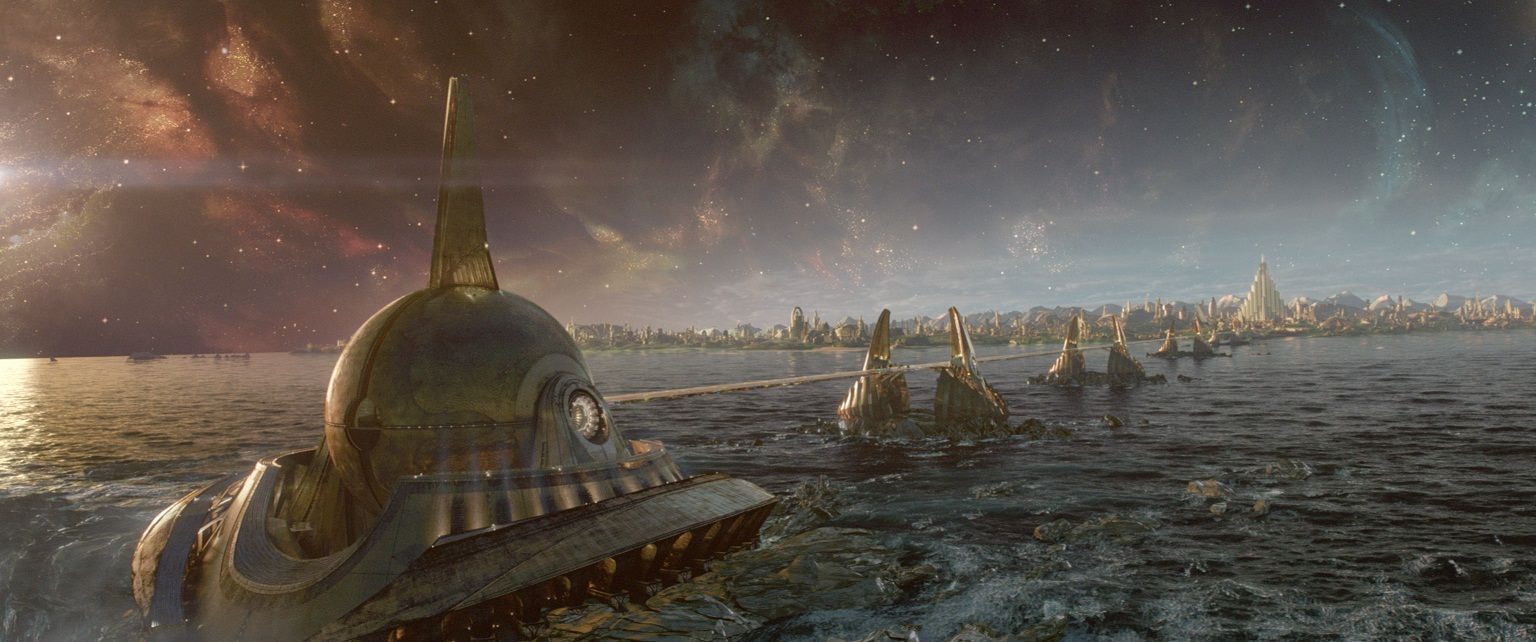The following contains spoilers for Thor: Love and Thunder, now in theaters.
Weird pop-cultural references abound in the Marvel Cinematic Universe, and the places where their fiction crosses over into our reality are part of what makes it all such a fun exercise. That can include fictional-but-plausible things like the Steve Rogers Broadway musical in Hawkeye, as well as real-world things such as the Guns 'N Roses posters on the kids' bedroom walls in Thor: Love and Thunder.
Rarely, however, does actual science enter the picture. The MCU has its own rules about how its various powers work, but fans generally accept that it has little scientific basis. So long as internal consistency can be maintained, the Rule of Cool applies, and the MCU can apply whatever laws of physics it wishes to produce the appropriate effect. Love and Thunder breaks hard from that tradition in one key moment, and oddly enough, it uses a real-world movie to help.
The moment arrives early on while Jane is undergoing chemotherapy to treat her cancer. A young man next to her is reading one of her books on theoretical physics. After recognizing her, he confesses that the material is a little daunting. She helpfully explains it to him by tearing a page out of the book and folding it to emulate the manner that wormholes allow for instant travel through space. The concept is scientifically sound, and the original Thor specified wormholes -- or more formally Einstein-Rosen bridges -- as her field of expertise. The transportation powers of Asgard's Bifrost Bridge were codified as a kind of wormhole, which is how her studies led to her initial meeting with Thor.
In the process of explaining the concept to her avid reader in Love and Thunder, she references a couple of real-life movies to make the point. Most notably, she mentions Christopher Nolan's Interstellar, which also used the concept of wormholes, and real-world physicists praised it at the time for its accuracy. The film concerned itself with a future effort to establish life on other worlds, as environmental catastrophe made existence on Earth increasingly difficult. Wormholes were used to propel humanity towards new habitable worlds to explore and possibly colonize.
A 2015 article from the BBC noted Nolan's commitment to technical accuracy for the movie, working with a theoretical physicist at Caltech to ensure the details were on point. Indeed, the film's visual effects -- particularly the way that light interacts with the space around black holes -- merited full articles in the American Journal of Physics and the Institute of Physics. It helped cement the film's bona fides as high-minded science fiction akin to the likes of 2001: A Space Odyssey.
The Thor movies never had such pretenses, and yet their use of the same theoretical model is notable. It grounds the MCU in at least something resembling the physics of the real world, as well as ensuring that it reflects reality well enough to stay recognizable amid things like magic and alien invasions. In the midst of that, it establishes that the MCU has a movie called Interstellar, directed by a version of Christopher Nolan, in which case Jane's comments are a further reflection of the MCU's scientific accuracy on this front.
In addition to Interstellar, Jane mentions Event Horizon, a decidedly less scientifically accurate endeavor that nevertheless utilizes the same principle. Early on in that movie, Sam Neill's scientist explains the way wormholes work by using the pages of a book: exactly the way Jane does in Love and Thunder. Referencing Event Horizon may have been a step too far, but Interstellar, at least, provides the pedigree to go along with its exposition.
Thor: Love and Thunder is currently playing in theaters.


